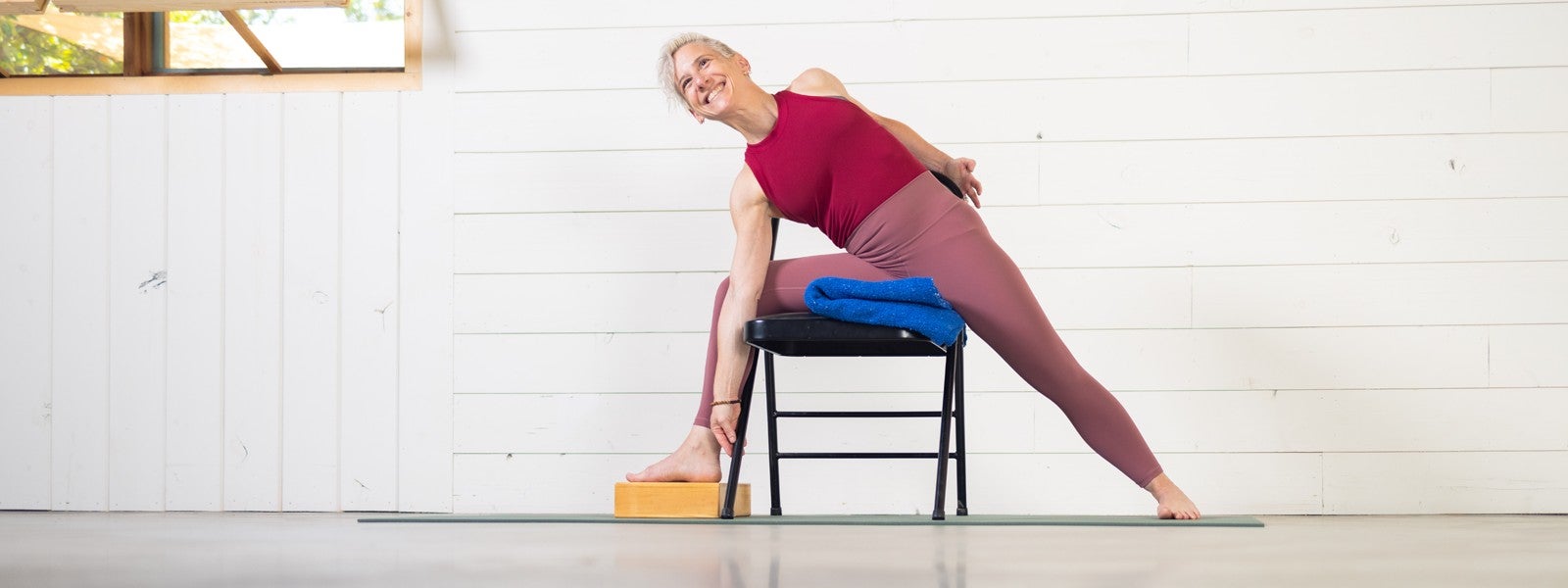
Expand Your Yoga Practice with a Chair
You may have seen the row of chairs in the back of your local yoga studio and wondered, Why have I never used one of those? Or maybe you thought using a chair - or any prop - is only for people who have trouble achieving the "full pose." Not at all.
It is true that chairs can be used to make poses more accessible to those with mobility issues. A chair is sometimes used to access a feeling of release and relaxation. But you may not know that a chair can also be a surprisingly empowering way to gain a deeper understanding of your alignment, and increase your focus, flexibility, and strength. With a chair, you can go places in some of your favorite poses that you have yet been unable to go!
In this blog we will show you a few popular yoga poses you might already be working on that can be augmented by adding in this simple prop.
Find a Chair
First, let's talk chairs. You probably already have a great chair at home that you can start putting into use the next time you hit your mat. It’s important to have a strong, stable chair without arms or wheels. An armless dining room chair will work just fine for many poses. If you find using a chair very beneficial you can always invest in a Yoga Chair.
Make sure at least two of your chair’s feet are on your yoga mat throughout your poses to prevent it from slipping.
Warrior 2 (Virabhadrasana II)
Benefits
Warrior 2 (Virabhadrasana II) is one of the most popular yoga poses. You can use a chair in this pose to help support your weight so you can focus on finding stretch without maxing out strength. The chair's support allows you to dedicate more of your attention to alignment and stay in the pose longer so you can find more openness in your groin, inner thighs, and hips, as well as expansion across your arms and chest. Additionally you will continue to build strength in your legs and outer hips even supported by the chair, as you can remain in the pose longer.
Warrior 2 with a Chair
- Place the chair facing the left side of your mat. Sit in the middle of the chair and straddle the seat.
- Turn your pelvis to the right and lay your right thigh bone over the seat of the chair, your left leg extending back, foot flat at an angle.
- Lengthen your spine and rotate your torso to the left a bit, extend your arms from the shoulder sockets, look out over your right fingertips. Settle in and find your breath.
- Soften your shoulder blades down your back, loosen any effort you do not need, and take several breaths here. The chair will allow you to be here longer and dial in the details.
- Come out of the pose and do the same on the other side.
Extended Side Angle Pose (Utthita Parsvakonasana)
Benefits
Extended Side Angle Pose (Utthita Parsvakonasana) offers a great twist in your whole upper body. By massaging your abdominal organs, twists aid in digestion, relieve constipation, and stimulate appetite. They can also ease lower back pain and sciatica symptoms. In this pose, you will benefit from increased strength in your legs and hips, and expanded flexibility in your spine, groin, back, shoulders, and neck. With the chair supporting your weight, this pose can become a more intense twist, as you put your effort into the stretch and find more space across your hips and upper body. Soften, breathe, and receive the rewards of this powerful twist.Extended Side Angle with a Chair
- Place your chair about a third from the top of your mat, facing the left side of the mat.
- Find Warrior 2 with your right leg over the chair. You can place a block under your foot if you have trouble reaching the floor.
- Lengthen from your waist reaching your right fingertips toward the front of your mat, and then tilt your upper body down. Bring your right arm to the inside of your right leg, and stretch your left arm up. Pause here for a few moments and let this pose settle into your body.
- When your body calls for more twist, bring your left hand down and find the back of your chair using the additional power of your arms to gently access more rotation in this pose. Draw the shoulder blades down the back, creating space for your neck to follow the twist. Nestle your hips into the seat and firm your feet into the ground, so you feel the rotation in your upper body and inside of your right thigh.
- Be here for 5 to 10 breaths. Allow your belly to soften as you continue to lengthen out through the back foot to the crown of the head. Slowly come out of the pose, then try the other side.
Half Moon (Ardha Chandrasana)
Benefits
Half Moon (Ardha Chandrasana) is a great pose to challenge your balance. It will also help strengthen your hips and glutes, as well as stabilize your core, feet, and ankles. Like with Warrior 2, since the stability of the chair allows you to remain in the pose longer, you can access more openness in your legs and hips, and across your chest, and work on your focus in this balance pose.Half Moon with a Chair
- Begin with your chair at the top of your mat, facing the back, or the side of your mat. Stand about a foot behind your chair.
- Find Warrior 2 with your right foot forward.
- Tilt from the waist toward the seat of your chair, bringing your gaze with you. Rest your right hand on the seat of your chair. Bring your left hand onto your left hip. Press off your left foot and stretch your left leg back behind you, balancing on your right leg.
- Open your left ribs to the ceiling, and extend your left arm up.
- Let your breath smooth out. Bring your mind to deepening the extension from the raised heel out through the crown of your head, and from the bottom hand through to the top fingertips. Stay here for several breaths. You can sharpen your focus further by lifting your gaze or releasing a bit of weight from your right fingertips.
- Try on the other side as well.
Wheel Pose (Urdhva Dhanurasana)
Benefits
Ready for a bit more challenge? Wheel Pose (Urdhva Dhanurasana) is both a deep backbend and an inversion. This challenging inversion stimulates the sympathetic nervous system, and the advanced practice of finding stillness in this pose trains the mind and body to remain relaxed in demanding situations. As a backbend, this pose will help you find openness in your thoracic spine, shoulders, belly, and hips, as well as encouraging neck extension. The back of the chair will provide a sort of fulcrum under your upper back that encourages an even deeper experience in this pose.Wheel Pose with a Chair
- For this pose you may need a chair with a lower back, like a Yoga Chair. You can place a blanket or folded yoga mat over the chair back for extra padding.
- Place your chair in the center of your mat, and sit on the seat facing forward.
- Place your heels securely onto the legs of the chair with the balls of your feet on the mat. This will keep your chair from tipping backwards as you work into the pose.
- Place your hands on either side of the chair and press your shoulder blades into the chair back. Arch your upper body over the top of the chair back.
- Release your head and extend your arms back. Take a few long, slow breaths here. Allow the muscles along your spine and neck to loosen, your head to drop, your jaw to relax, as you find more openness across the shoulders and through the front body.
Using a chair doesn't mean your yoga practice will be easier. You can challenge yourself in almost any pose by adding in a this handy prop. Now that you see how it can work, you can explore deepening your experience in some of your favorite poses. And if you're sitting in a chair reading this right now, you can begin to turn the time you sit at a desk into part of your fitness routine.
Let us know how you incorporate a chair into your yoga practice in the comments below!
Comments
No comments yet. Be the first!
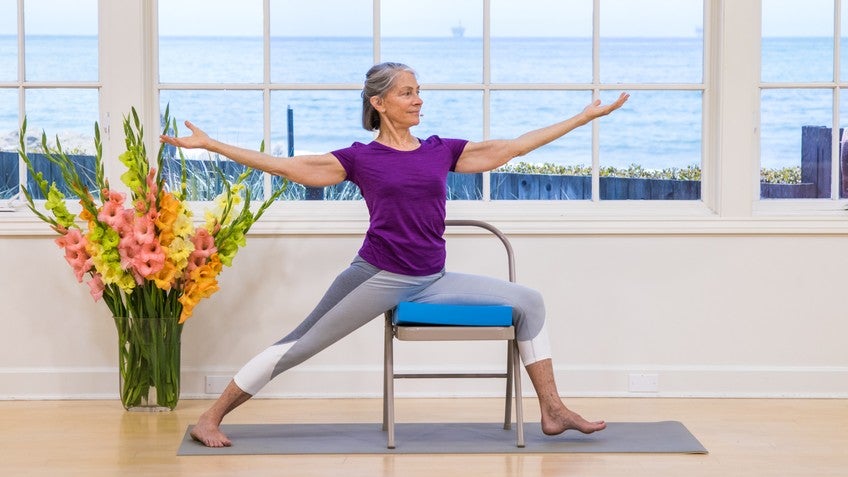
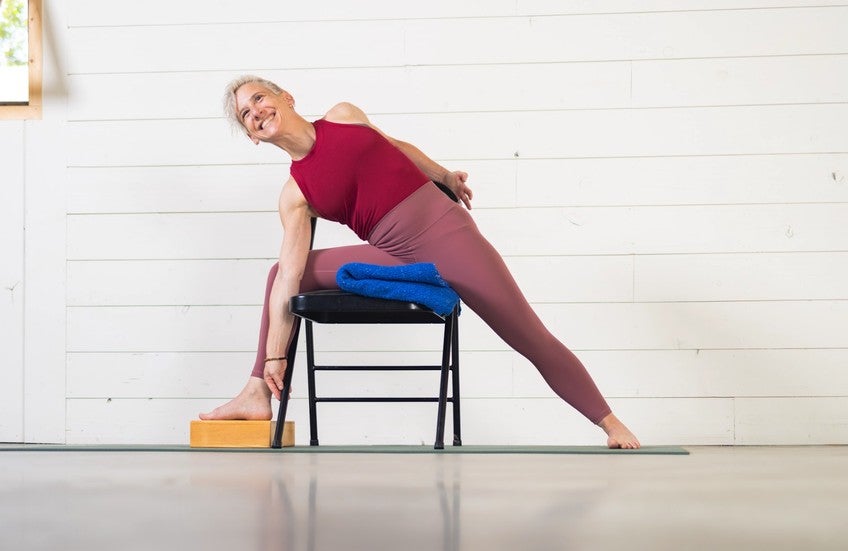
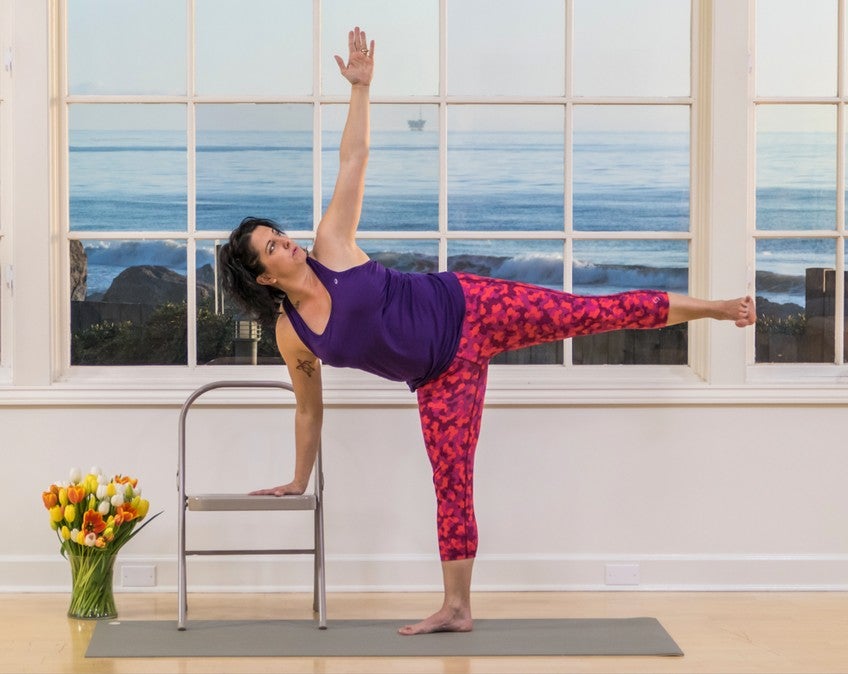
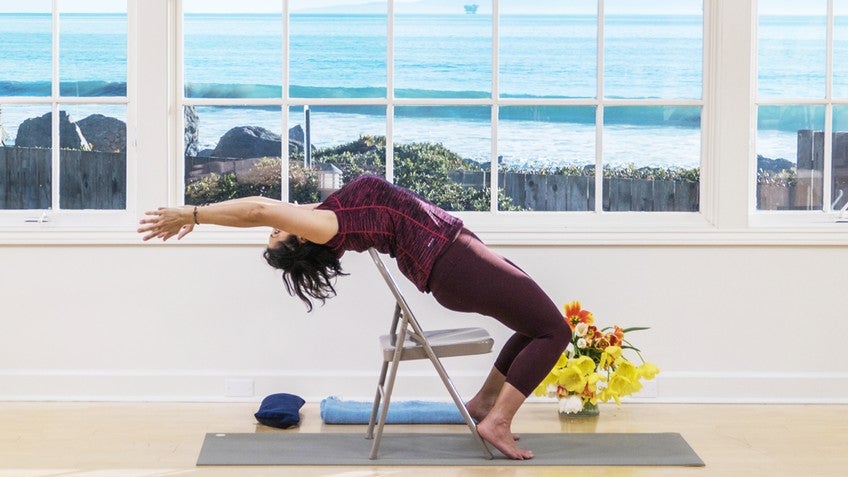


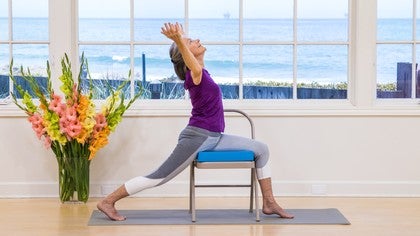

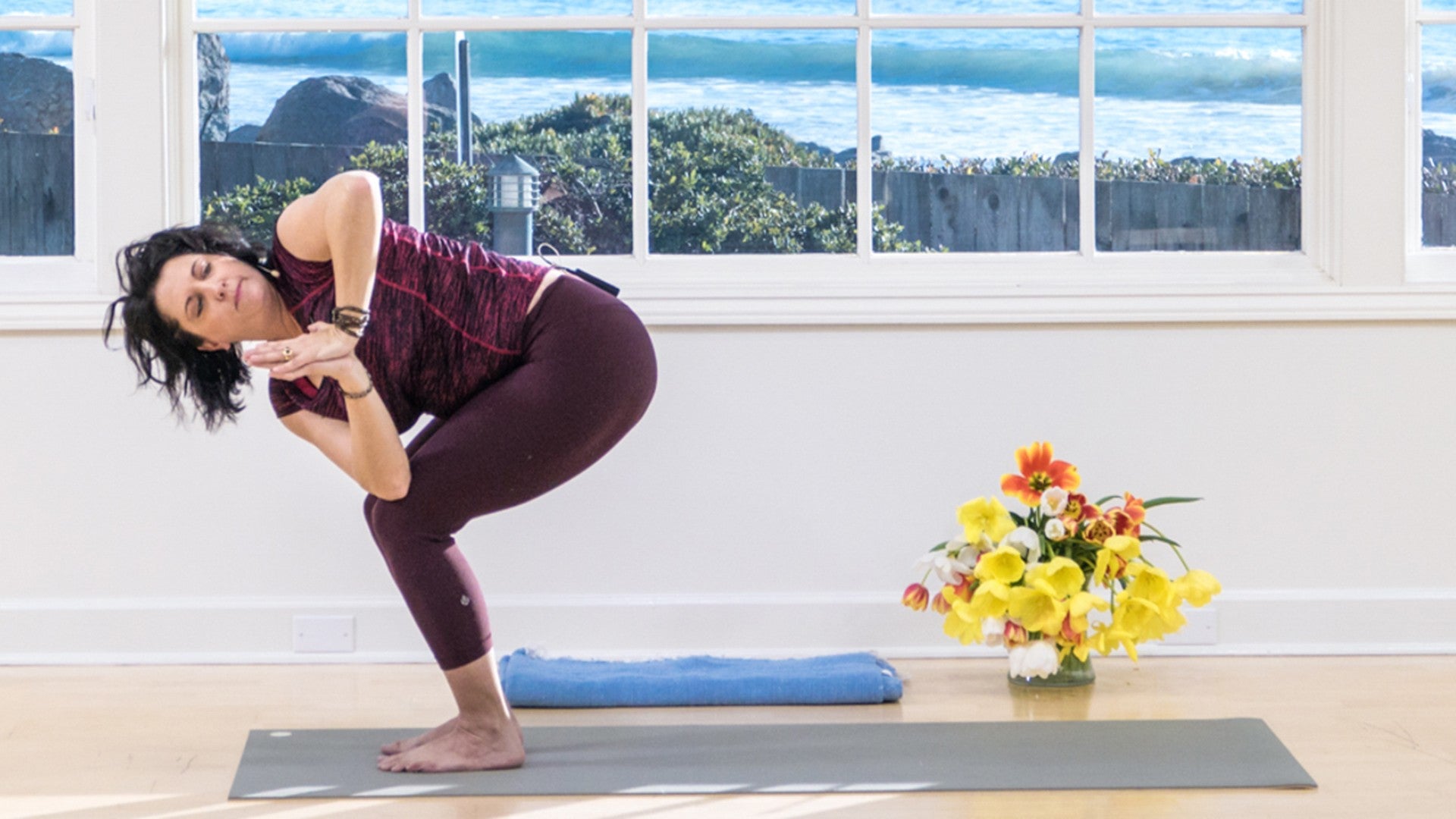
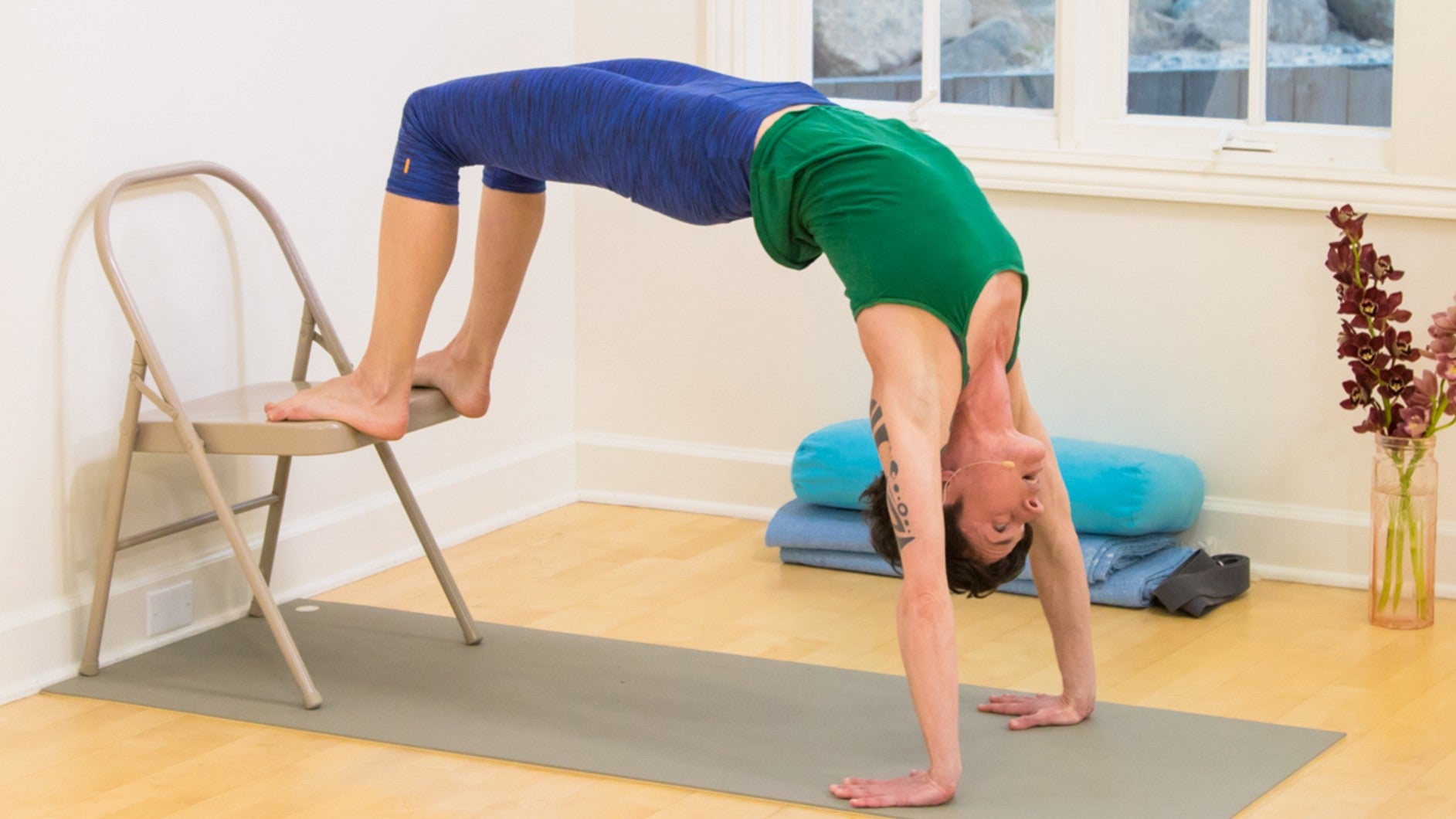
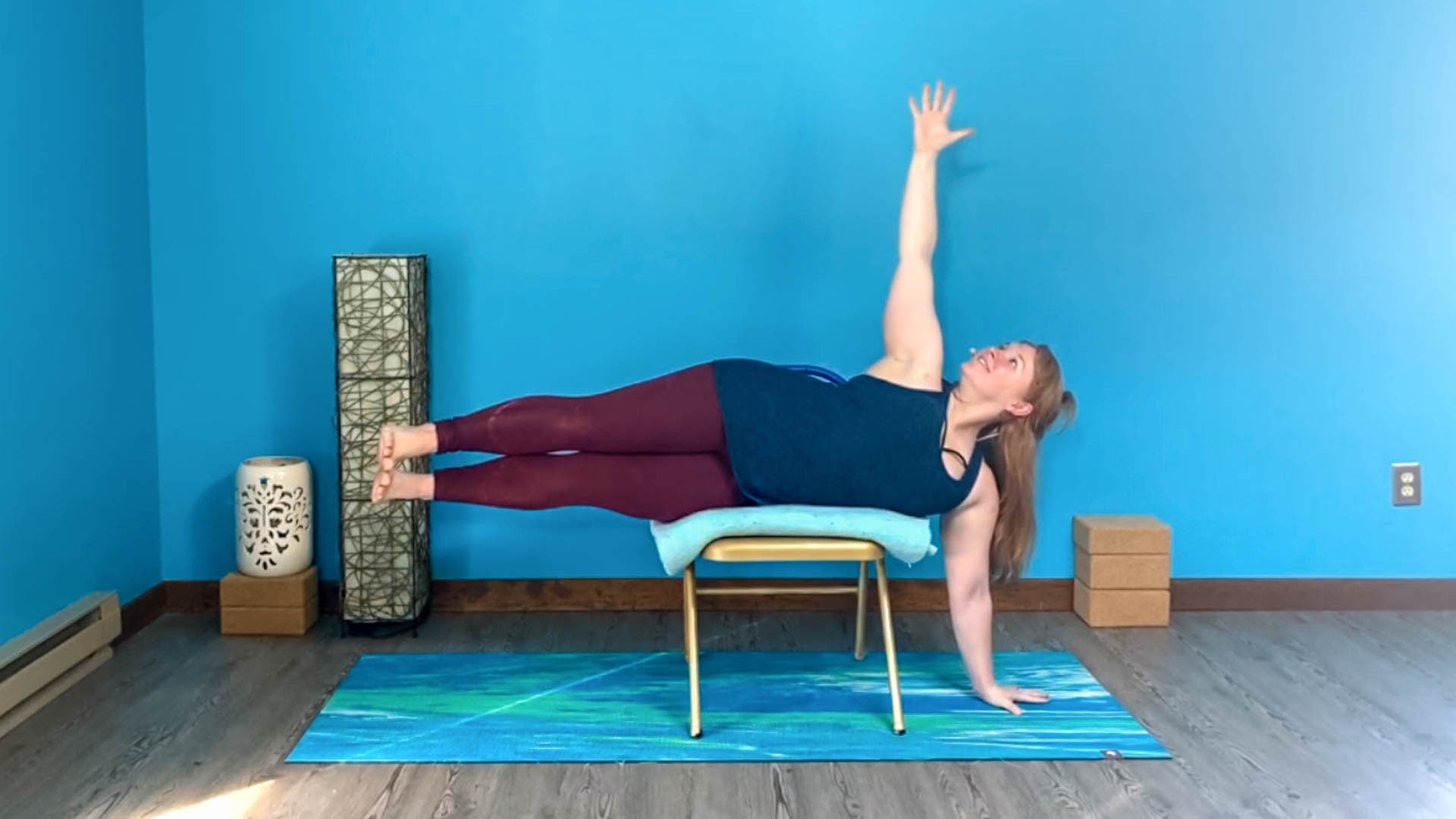
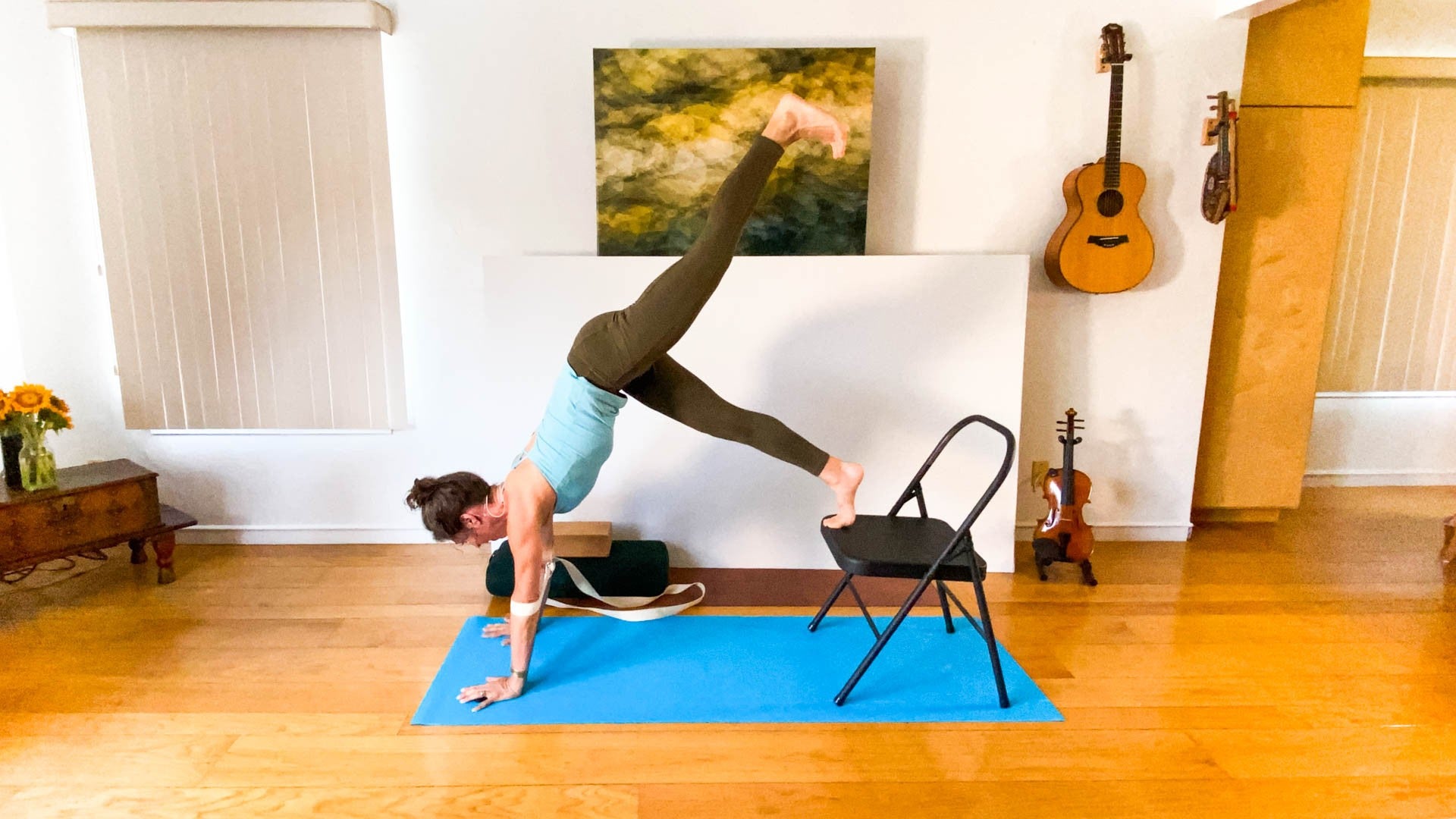




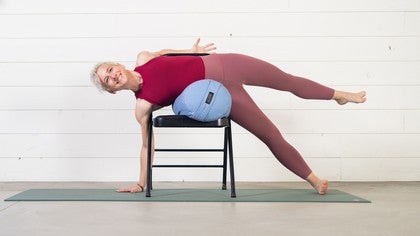






You need to be a subscriber to post a comment.
Please Log In or Create an Account to start your free trial.